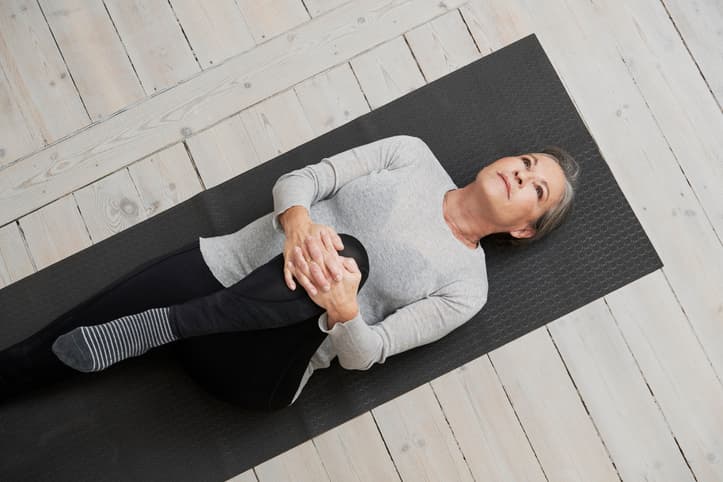Today is National Senior Health and Fitness Day (Spring Event). Now entering its 29th year, Senior Health and Fitness Day strives "to help keep older Americans healthy, fit and safe, and to showcase what local groups are doing in their communities to promote senior health and wellness."
If you care for someone who's 65 or older, it's crucial that they exercise regularly. Heidi Huynh, the owner of Ascend Therapy, and an occupational therapist, who helps active older adults experiencing a setback maximize safety and independence at home, says exercise is important for two reasons:
Sarcopenia - the natural loss of muscle mass which accelerates with age;
Dynapenia - the loss of muscle strength that occurs as a result of getting older.
"Muscle is important for movement, disease and infection resistance, metabolism, independence, and quality of life," said Huynh. "So it's important to combat these changes with exercise and daily movement.
Remember the phrase 'if you don't use it you lose it?' Exercise and physical activity help keep your muscles strong and your body moving. There are cognitive benefits as well."
How can I help my care recipient stay active?
If your care recipient has an underlying health problem that affects their mobility, like arthritis or multiple sclerosis, it can be daunting to know where to start.
"Exercise doesn't have to be scary," said Huynh. "Think of it as daily movement."
Specifically, Huynh recommends taking a three-step approach:
Step 1: Identify the type of exercise that your loved one wants to participate in.
As a general rule, it's a good idea to start with something easy, like seated exercises, walking, or chair yoga. "Find something that fits your loved one's interests and needs," said Huynh.
Step 2: Establish a schedule for physical activity.
"Find a time to exercise that works for your loved one," said Huynh. "That could be 4 days a week at a specific time of day for 20 minutes, or it could mean doing exercises every time your loved one has to wait for the microwave or brush their teeth."
Step 3: Create accountability.
Maintaining a healthy lifestyle isn't always easy, so it's vital to check in with your care recipient regularly. When it comes to exercise, you may even want to bring in professional help.
"Hiring a coach or a therapist to support your loved one and hold them accountable can make a big difference," Huynh said.
How much exercise should someone 65 and older get?
No two people are exactly alike. Everyone has different strengths and weaknesses, so it's important to take your care recipient's abilities into account. Still, Huynh says that any exercise is better than nothing.
"Some sort of daily movement is important. I don't want people to be discouraged by not meeting the norms and then not participate at all."
If you're unsure about where to start, schedule an annual health exam with your senior's primary care provider. After a physical, health screenings, and a review of your care recipient's lifestyle, their provider can make recommendations that align with their age and abilities.
Do I need any special equipment for regular exercise?
"Don't let the 'need for equipment hold you back!" Huynh said. "Sometimes equipment is nice to accomplish different types of strengthening, but in reality, no equipment is NEEDED for exercise or daily movement."
That said, some extra support can make all the difference.
"The most common 'equipment' that I recommend to my clients is a countertop to hold onto for balance during standing exercises; a sturdy chair with armrests for chair pushups; and a sturdy chair without arms for seated movements and reaching tasks."
If your loved one wants to do weight training, but they don't have dumbells or a kettle ball, Huynh recommends using canned foods or other household items, like full water bottles.
What can I do to reduce the risk of injuries?
Now that we've highlighted the benefits of exercise, let's take a closer look at injury prevention.
"It's important, especially when trying new exercises, to be aware of your limitations and listen to your body," Huynh said. "Not every exercise is great for everyone. If an exercise causes pain, try a different one."
She continued, "you should also work with a qualified medical professional. Talk to your care recipient's doctor or see a physical or occupational therapist who can create an exercise program or plan specific to your care recipient's needs."
How else can I celebrate National Senior Health and Fitness Day?
Aside from encouraging your care recipient to exercise regularly, there are various ways to recognize the annual wellness event.
Some of our recommendations include:
Attending a local health fair
Signing up for an exercise class at a local gym or senior center
Scheduling routine preventive screenings, like a mammogram or a prostate exam
Talking to your loved one's doctor about their diet and nutrition
Taking a walk around the neighborhood or a local park
Making a healthy meal that includes vegetables, whole grains, and a lean protein
Sharing photos or videos of you and your care recipient celebrating on social media
Make sure your care recipient is up-to-date on their immunizations
If you miss the spring event, don't worry. There's also a fall health and fitness event on October 26.
"Exercise and daily movement offer benefits in all stages of life, but it's especially crucial to stay active and mobile as you age," Huynh said. "The important thing is to continue to move, whichever way works for you, to continue to stay active and independent."



